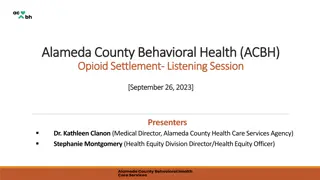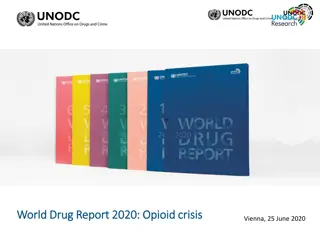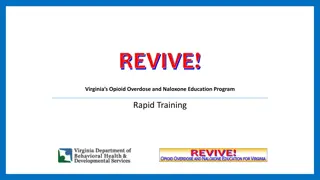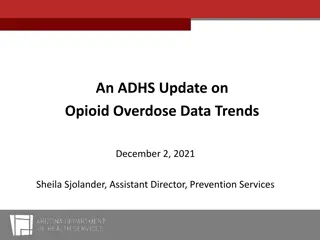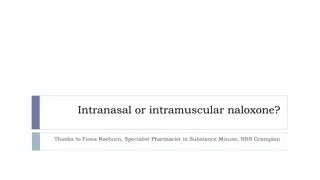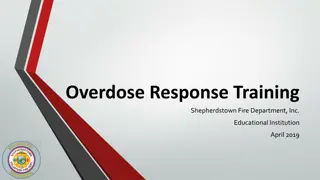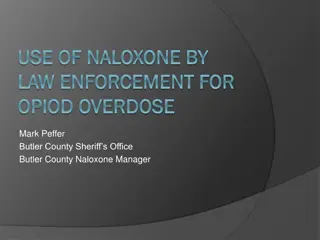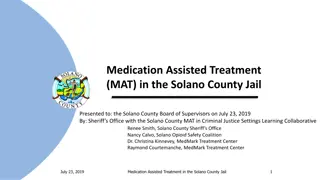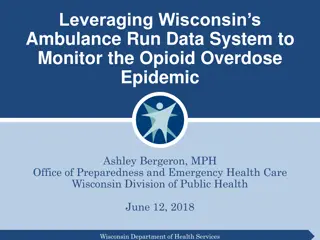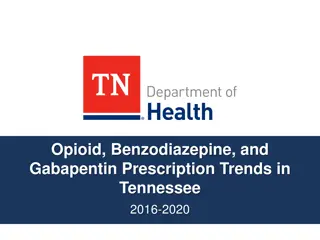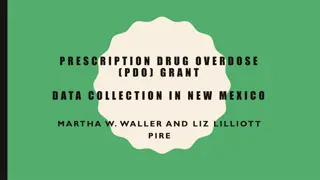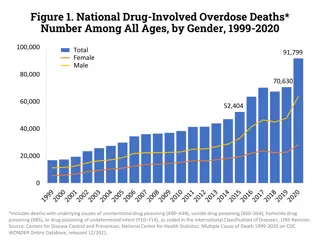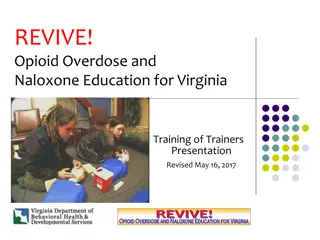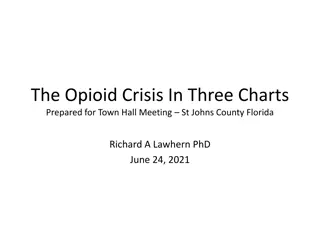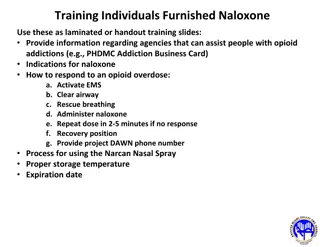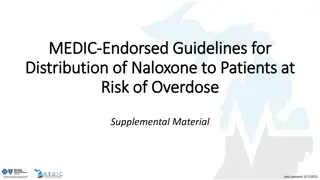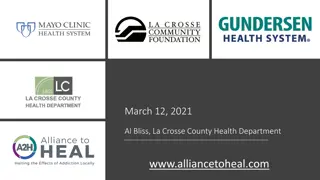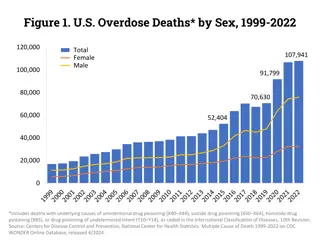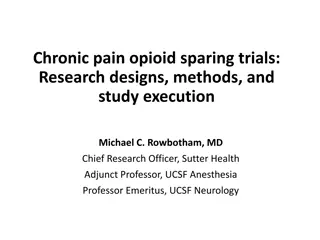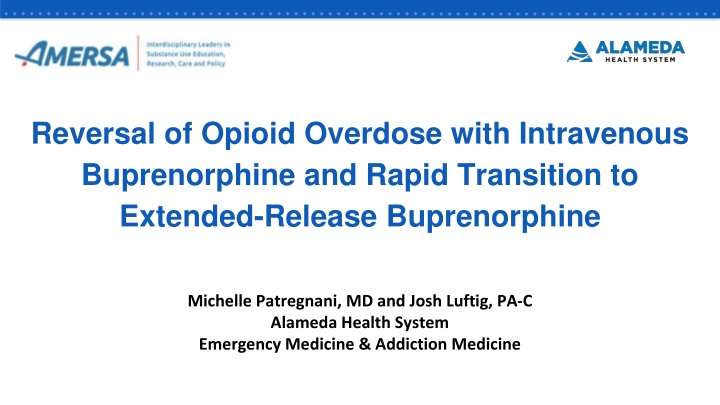
Intravenous Buprenorphine for Opioid Overdose Reversal and Transition to XR Buprenorphine
Learn about using intravenous buprenorphine for opioid overdose reversal and rapid transition to extended-release buprenorphine, including pharmacology, case studies, and benefits. Discover protocols to manage opioid overdose effectively.
Download Presentation

Please find below an Image/Link to download the presentation.
The content on the website is provided AS IS for your information and personal use only. It may not be sold, licensed, or shared on other websites without obtaining consent from the author. If you encounter any issues during the download, it is possible that the publisher has removed the file from their server.
You are allowed to download the files provided on this website for personal or commercial use, subject to the condition that they are used lawfully. All files are the property of their respective owners.
The content on the website is provided AS IS for your information and personal use only. It may not be sold, licensed, or shared on other websites without obtaining consent from the author.
E N D
Presentation Transcript
Reversal of Opioid Overdose with Intravenous Buprenorphine and Rapid Transition to Extended-Release Buprenorphine Michelle Patregnani, MD and Josh Luftig, PA-C Alameda Health System Emergency Medicine & Addiction Medicine
Learning objectives Discuss IV buprenorphine pharmacology for fentanyl overdose Identify patients and scenarios to maximize benefits and minimize risks of IV buprenorphine reversal for overdose Describe a protocol using IV buprenorphine for opioid overdose reversal and rapid advancement to full-dose XR buprenorphine
Bup pharmacology Route SL IV Peak plasma concentrations (Cmax) 45-60 minutes 2-5 minutes ( quick on / quick off ) Dose equivalence 1 mg 0.3 mg
Case 1 A 57-year-old female with opioid, alcohol, and stimulant use disorders She was unresponsive with respiratory depression and responded to naloxone. She received IV bup starting at 0.15 mg, then 0.3 mg and 0.6 mg increments hourly, titrated to responsiveness. She received a total of 2.85 mg IV (roughly equivalent to 8.6 mg SL) administered over 7 hours, followed by buprenorphine-XR 300 mg. She was observed for 4 hours, then discharged. At follow-up, denied opioid withdrawal symptoms.
Case 2 A 26-year-old male with OUD recent incarceration, presented to ED with opioid intoxication He became unresponsive after fentanyl overdose in the bathroom. He had no respiratory depression, naloxone not administered. He received IV bup at 0.3 mg and 0.6 mg increments hourly. 3.3 mg IV (roughly equivalent to 9.9 mg SL) was administered over 7 hours, followed by buprenorphine-XR 300 mg. He was observed for 40 minutes, then discharged. At follow-up, he reported feeling well.
Use of IV buprenorphine for reversal High opioid load in OD setting permits rapid IV microdosing High load mitigates withdrawal symptoms IV bup s Quick on / Quick off allows careful uptitration Rapid IV microdosing Safely, quickly, and precisely titrates to OD reversal Smoothly transitions to bup-XR over the course of a single encounter
Bup 0.3 mg IV q ~1h to wakefulness
Conclusions Buprenorphine reverses respiratory depression by displacing full agonist IV buprenorphine allows seamless transition from OD to XR-bup High load of agonist in overdose setting protects against precipitated withdrawal symptoms Potential to reduce OD rates during high risk post OD windows Potential to increase retention in this high risk population Creates a rapid pathway to long term treatment
Health Equity Considerations BIPOC patients are less likely to receive buprenorphine treatment compared to white patients Barriers: insurance coverage disparities, availability of prescribers in underserved areas, treatment bias Protocol benefits: Standardizes care reducing bias Overcomes transportation and pharmacy barriers

